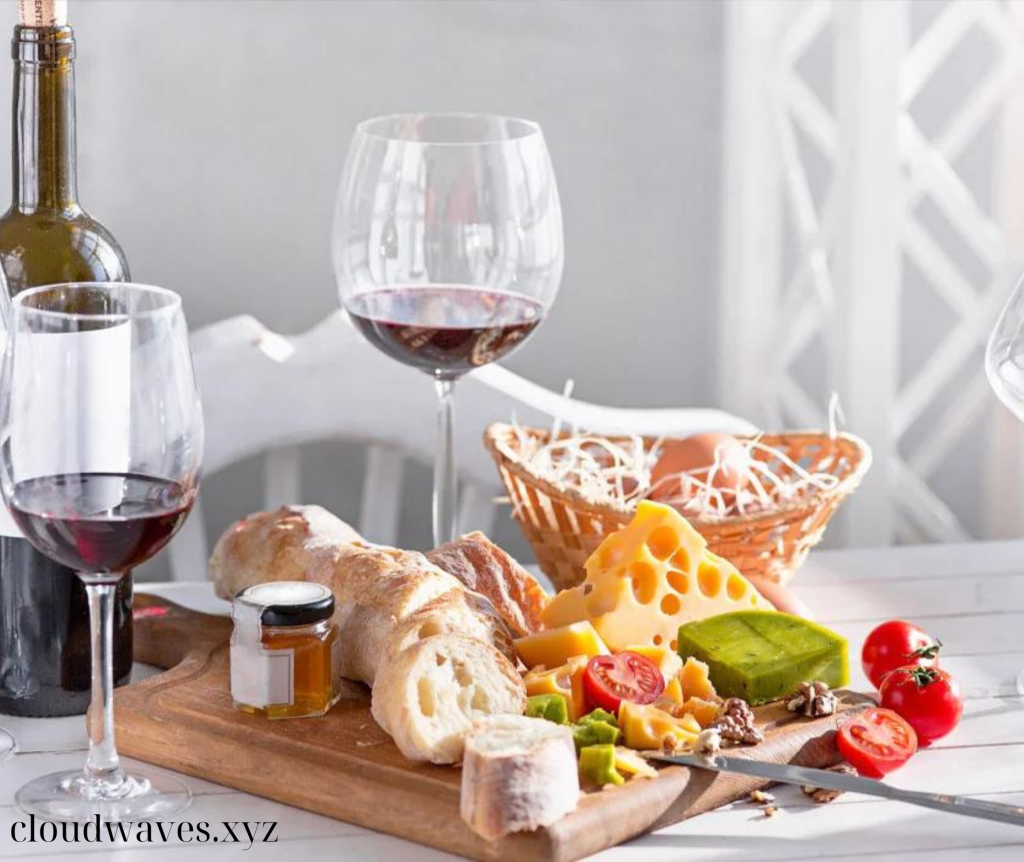Wine Food Pairings
Premium Wine and Food Pairings to Elevate Your Dining Experience to a New Level
Elevating your dining experience through premium wine and food pairings is an art that combines the complexities of flavor profiles, textures, and aromas to create a harmonious culinary experience. Premium pairings enhance each component of a meal, ensuring that the wine complements and elevates the food, while the food enhances the wine. This guide explores the intricacies of premium wine and food pairings, offering insights into how to achieve the perfect balance and create memorable dining moments.
Table of Contents
ToggleKey Highlights
- Understanding Flavor Profiles: Exploring how different wines interact with various food flavors, from delicate to robust.
- Classic Pairings: Highlighting traditional pairings that have stood the test of time for their complementary qualities.
- Innovative Combinations: Introducing modern and creative pairings that push the boundaries of conventional dining.
- Pairing Techniques: Offering practical techniques and tips for pairing wine and food effectively.
- Exclusive Recommendations: Featuring premium wine and food options that provide a luxurious and elevated dining experience.
Understanding Flavor Profiles: Balancing Wine and Food
To achieve the perfect pairing, it’s essential to understand how the flavor profiles of wine and food interact:
- Wine Characteristics: Different wines have distinct characteristics, including sweetness, acidity, tannins, and body. For example, a full-bodied red wine like Cabernet Sauvignon has bold flavors and high tannins, while a crisp white wine like Sauvignon Blanc offers bright acidity and citrus notes.
- Food Flavors: Foods can range from delicate and subtle to rich and intense. The flavor profiles of foods, such as sweetness, saltiness, acidity, and umami, influence how they pair with wine.
- Complement and Contrast: Pairings can either complement similar flavors or contrast with different ones to create a balanced experience. For instance, a rich, creamy dish pairs well with a wine that has high acidity to cut through the richness, while a sweet dessert pairs beautifully with a sweet wine that matches its sweetness.
Classic Pairings: Time-Tested Combinations
Classic pairings are traditional combinations that have proven successful over time:
- Chardonnay and Lobster: The buttery richness of a Chardonnay complements the sweet, delicate flavors of lobster. The wine’s creamy texture enhances the lobster’s rich, buttery sauce.
- Pinot Noir and Duck: The fruity and earthy notes of Pinot Noir pair perfectly with the rich flavors of duck. The wine’s acidity balances the fattiness of the meat.
- Cabernet Sauvignon and Ribeye Steak: A robust Cabernet Sauvignon enhances the bold flavors of a ribeye steak. The wine’s tannins cut through the meat’s fattiness, creating a balanced and satisfying pairing.
- Sauternes and Foie Gras: The sweet, honeyed notes of Sauternes beautifully complement the rich, savory flavors of foie gras. The wine’s sweetness contrasts with the richness of the dish, creating a luxurious experience.
Innovative Combinations: Creative Pairings for a Unique Experience
Exploring modern and creative pairings can offer exciting new flavors and sensations:
- Zinfandel and Spicy BBQ: The bold, fruity flavors of Zinfandel complement the smoky, spicy notes of BBQ. The wine’s fruitiness balances the heat and enhances the barbecue sauce.
- Riesling and Sushi: The crisp acidity and subtle sweetness of Riesling pair well with the delicate flavors of sushi. The wine’s acidity cuts through the richness of sushi rolls and enhances the freshness of the fish.
- Grenache and Mediterranean Cuisine: The bright, berry notes of Grenache complement the diverse flavors of Mediterranean dishes. Its versatility makes it an excellent choice for pairing with dishes like lamb, olives, and roasted vegetables.
- Champagne and Popcorn: The effervescence and acidity of Champagne pair surprisingly well with the buttery, salty flavors of popcorn. The bubbles cleanse the palate and enhance the savory snack.
Pairing Techniques: Practical Tips for Success
Effective pairing techniques can help you achieve the perfect balance:
- Match Intensity: Ensure that the intensity of the wine matches the intensity of the food. Light wines should pair with light dishes, while bold wines complement rich, hearty meals.
- Consider Acidity and Sweetness: Match the acidity of the wine with the acidity of the food, and ensure that sweet wines complement sweet dishes. This balance prevents one component from overpowering the other.
- Experiment with Textures: Pair wines and foods based on their textures. For example, a crisp white wine can balance creamy dishes, while a smooth red wine complements tender meats.
- Trust Your Palate: Ultimately, the best pairings are those that you enjoy. Trust your taste preferences and experiment with different combinations to discover what works for you.
Exclusive Recommendations: Premium Wine and Food Selections
For a truly luxurious dining experience, consider these premium options:
- Vintage Bordeaux and Filet Mignon: A vintage Bordeaux with its complex flavors and refined tannins pairs exquisitely with a tender filet mignon. The wine’s depth enhances the steak’s rich taste.
- Barolo and Truffle Dishes: The powerful, earthy notes of Barolo complement the luxurious, aromatic flavors of truffle dishes. The wine’s bold character matches the intensity of the truffle.
- Tokaji and Blue Cheese: The rich, honeyed sweetness of Tokaji contrasts beautifully with the strong, tangy flavors of blue cheese. This pairing creates a sophisticated and indulgent experience.
- Brunello di Montalcino and Osso Buco: The robust, full-bodied Brunello di Montalcino enhances the flavors of Osso Buco, a rich, slow-cooked veal dish. The wine’s structure supports the dish’s complexity.
Conclusion
Premium wine and food pairings offer an elevated dining experience that celebrates the harmony between flavors, textures, and aromas. By understanding flavor profiles, exploring classic and innovative pairings, and applying effective pairing techniques, you can create memorable and luxurious culinary moments. Investing in high-quality wine and food selections further enhances the dining experience, ensuring that each meal is both sophisticated and delightful.
FAQ
- How do I choose the right wine for a specific dish? Consider the intensity, flavor profile, and texture of both the wine and the dish. Match lighter wines with delicate foods and bold wines with rich dishes. Experimenting with different combinations can also help you find the best match.
- What makes a pairing “premium”? Premium pairings involve high-quality wines and gourmet foods that offer exceptional flavor and complexity. These pairings are carefully selected to enhance and elevate the dining experience.
- Can I pair wine with non-traditional foods? Absolutely. Creative pairings with non-traditional foods can provide unique and exciting flavor combinations. Feel free to experiment with modern dishes and innovative pairings.
- How can I ensure a successful pairing? Focus on balancing intensity, acidity, sweetness, and texture between the wine and the food. Trust your palate and be open to experimenting with different combinations to achieve the best results.
- What are some tips for serving wine with food? Serve wine at the appropriate temperature for its type (e.g., red wines at room temperature, white wines chilled). Pour the wine just before serving to ensure it is fresh, and consider decanting robust reds to enhance their flavors.

